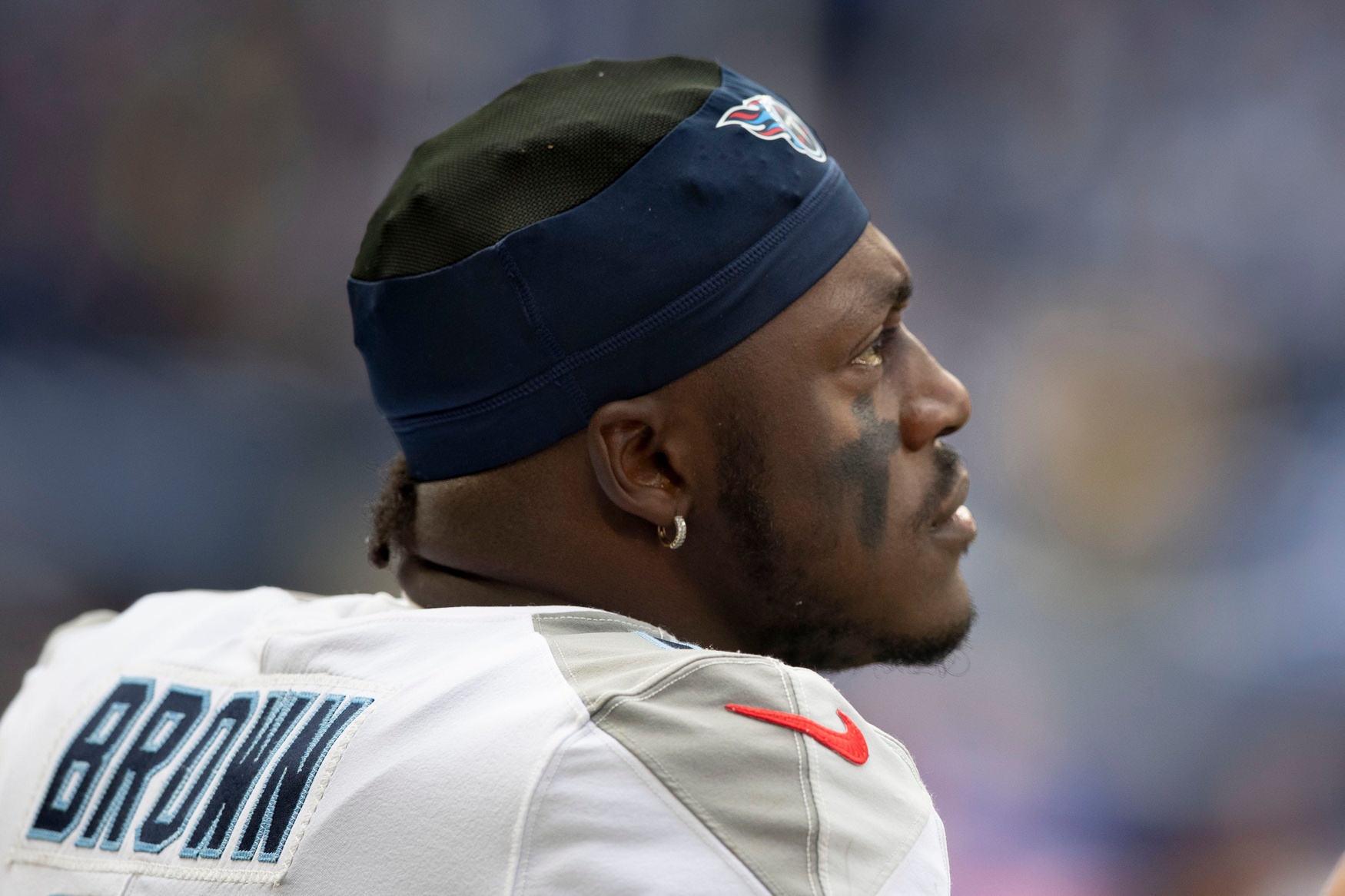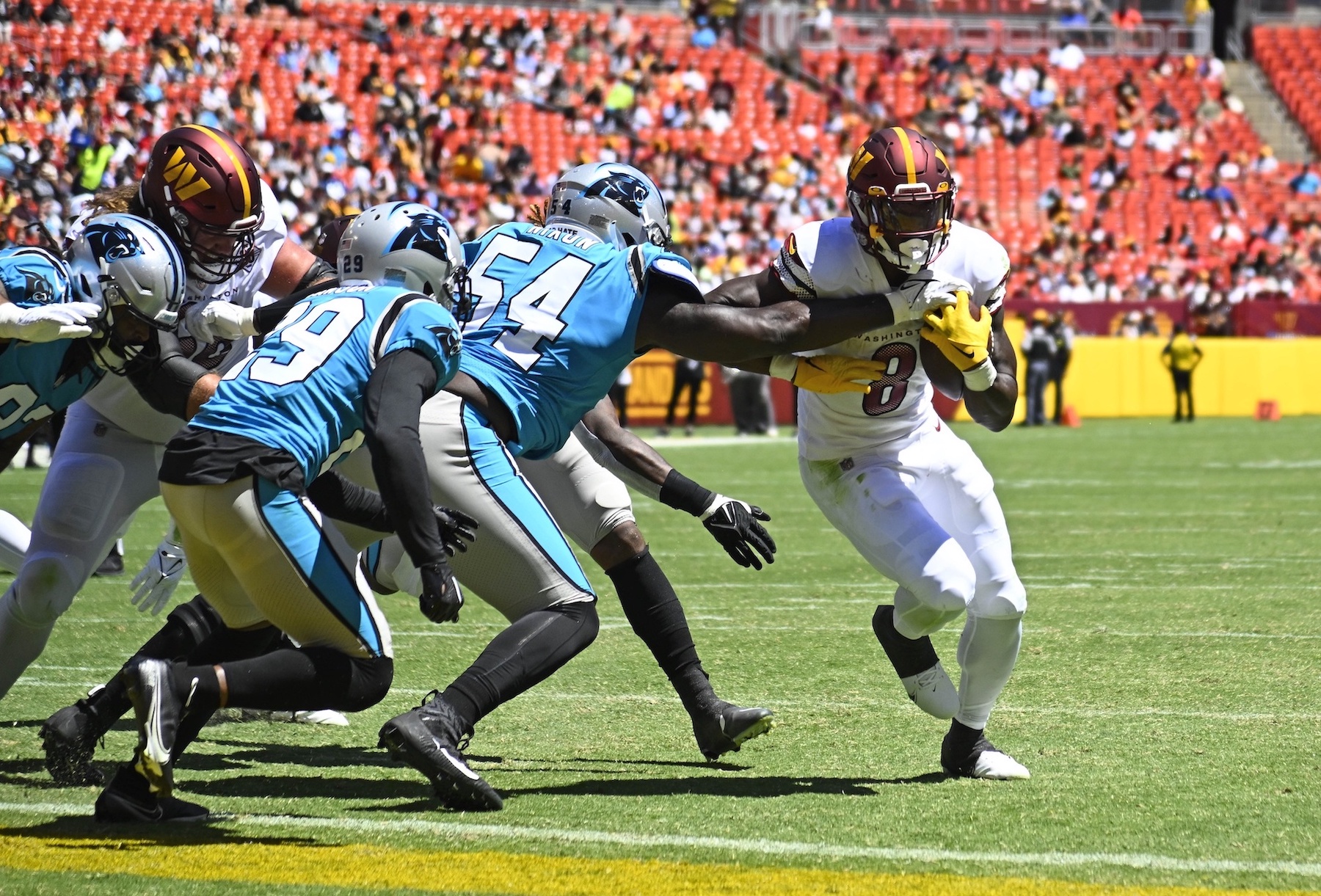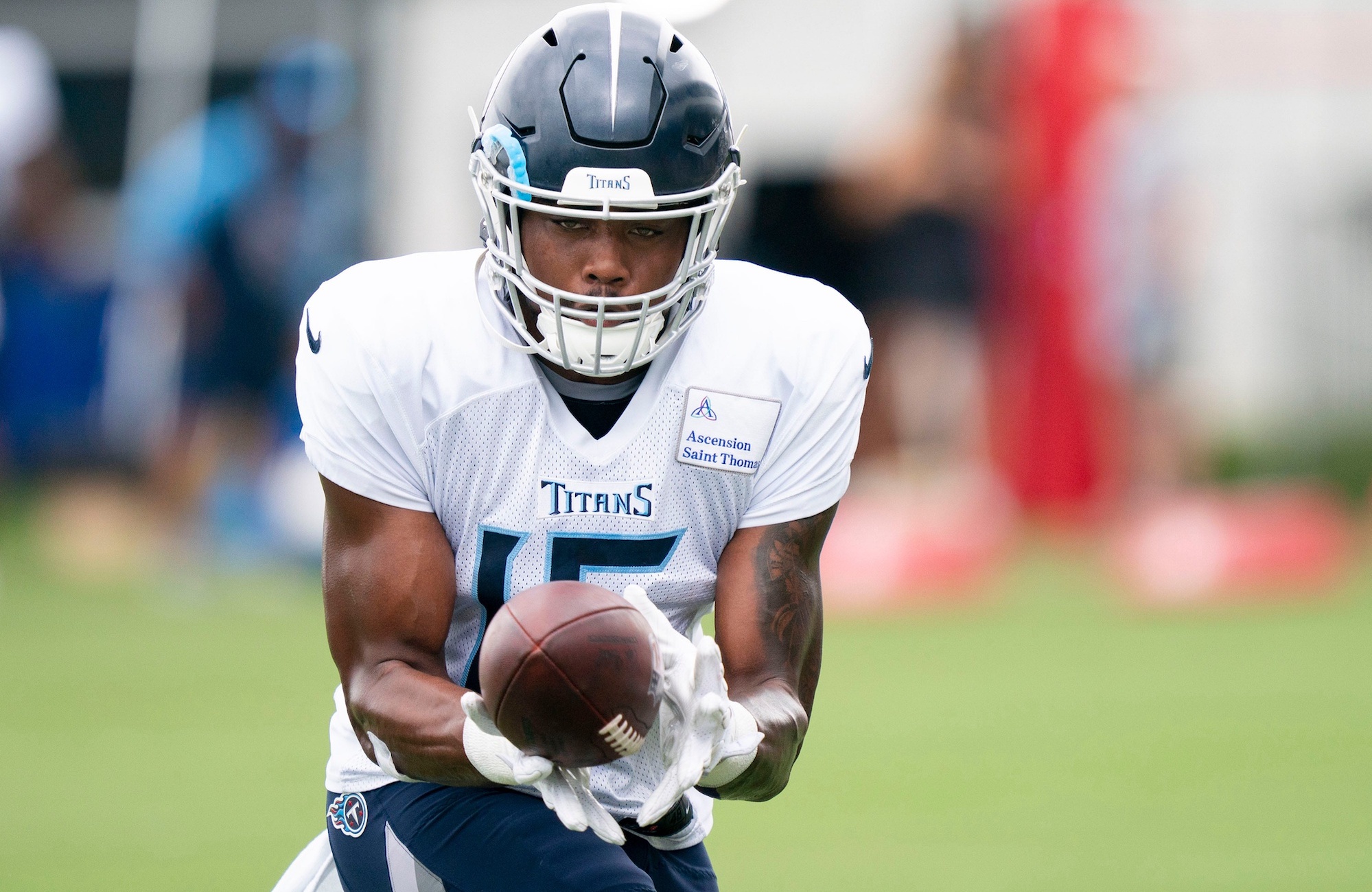The first round of the 2022 NFL Draft was filled with several shocking occurrences, including a pair of stunning trades involving two 1,000-plus-yard receivers. The most shocking deal saw the Tennessee Titans agree to trade disgruntled superstar receiver A.J. Brown to the Philadelphia Eagles in exchange for the No. 18 overall selection and a third-round selection (which the Titans later dealt away in a separate draft-day trade with the New York Jets). Brown then swiftly agreed to a four-year contract extension with the Eagles worth $100 million with $57 million in guarantees.
Brown held out of Tennessee’s voluntary workout program in early April as he and his representation attempted to negotiate a new contract that would contain a hefty raise in pay. Tennessee didn’t see eye-to-eye with Brown regarding his market value, and Philadelphia revealed themselves as a suitor willing to meet his demands. Brown now joins Philadelphia, while becoming one of the highest-paid receivers in the league on an annual basis. Tennessee would go on to draft Brown’s replacement, Arkansas wide receiver Treylon Burks, with the first-round selection they acquired from Philadelphia.
A second-round selection out of Ole Miss in the receiver-laden 2019 NFL Draft, Brown is set to earn just $3.986 million in 2022, which qualifies as the final season of his four-year rookie contract. With the receiver market absolutely exploding earlier this offseason, Brown was rightfully looking to land a sizable payday. The Green Bay Packers and Kansas City Chiefs found themselves in somewhat similar situations earlier this offseason and decided to deal away Davante Adams and Tyreek Hill, respectively. The Seattle Seahawks and San Francisco 49ers are currently in even more similar situations to the one Tennessee found themselves in. Both D.K. Metcalf and Deebo Samuel were drafted in the second-round in 2019 like Brown was, and with both players also looking for new contracts, it’s worth monitoring how those scenarios ultimately play out now that another domino in the receiver market has fallen.
Brown’s addition represents a massive get for an Eagles franchise that desperately required the services of a dominant boundary receiver. Philadelphia has largely struggled to draft and develop high-level receivers as of late, a situation that was further magnified by the ill-advised selections of Jalen Reagor and J.J. Arcega-Whiteside. Eagles General Manager Howie Roseman began appropriately addressing the situation by drafting DeVonta Smith last season but more was still required at the position. Brown’s explosive abilities should help further unlock Smith, who typically does his most effective work as a receiver while working underneath the coverage. With Brown officially in the mix, Head Coach Nick Sirianni and Offensive Coordinator Shane Steichen will be tasked with designing a more balanced offensive attack going forward.
Philadelphia’s offense owned the league’s most efficient and effective rushing attack throughout the 2021 campaign, averaging a staggering 159.7 rushing yards per contest. That’s a full 10 yards more per game than the second-best rushing offense (the Indianapolis Colts averaged 149.4 rushing yards per game). The Eagles averaged a league-low 43% pass rate, while throwing for just 200.2 passing yards per contest. It’s an unacceptable statistic in today’s pass-happy league. The addition of Brown should help the Eagles take a desired step forward in that department but just how sizable the outcome of that progression turns out to be largely depends on Jalen Hurts’ overall development as a passer.
For the team on the other side of this coin, this is an extremely difficult pill to swallow for the Titans and their fan base. The general feeling within Nashville is that the Titans would reach an agreement with Brown on a long-term extension in July. General Manager Jon Robinson has typically re-signed his star players to extensions before training camp begins, with previous extensions being completed for Derrick Henry, Taylor Lewan and Kevin Byard during that time of year, to name a few. The gap between Tennessee’s evaluation of Brown and what his market demanded is rather confusing. In three seasons as a Titan, Brown compiled 201 receptions, 3,024 receiving yards and 26 touchdowns. Brown began his career as a Titan by stringing together back-to-back 1,000-yard seasons and would have likely recorded a third consecutive 1,000-yard campaign in 2021 had injury not limited him to just 13 regular-season appearances. Brown achieved such statistical outputs despite playing in a run-first offense that featured a 2,000-yard running back in Derrick Henry.
The Titans arguably entered the offseason with a need at receiver following the failure and departure of Julio Jones. Drafting Burks to pair with Brown made a ton of sense on the surface, but replacing Brown with Burks doesn’t quite compute or move the needle forward. Tennessee’s passing offense will now be overly reliant on the hope that Burks can make an immediate impact. It also adds pressure to their previous acquisition of Robert Woods, who is returning to the field from a season-ending knee injury. For what it’s worth, Burks is an excellent prospect that fits Tennessee’s offensive scheme and his skill set is comparable to Brown’s.
Burks’ draft-day moment was largely ruined for Titans fans by the Brown announcement. Burks is not to blame. Tennessee could draft another receiver with one of their three selections on Friday, but it would still mean they’re counting on massive contributions from rookies.
Robinson’s willingness to move away from Brown seems like a peculiar roster building method. In recent offseasons, the Titans have committed large amounts of money to the 28-year-old Henry, 31-year-old Lewan, 34-year-old quarterback Ryan Tannehill and 29-year-old Byard. Robinson signed the 29-year-old Bud Dupree to a five-year contract worth a staggering $82.5 million last offseason despite the fact Dupree was returning from a season-ending ACL injury of his own. Earlier this year, Robinson re-signed 26-year-old pass rusher Harold Landry to a five-year contract extension worth $87.5 million following the completion of Landry’s first double-digit sack season. Robinson also agreed to pay 32-year-old center Ben Jones $7 million annually over the next two years. Signing all of these aging players to big-money contracts only to turn around and refuse to pay your 24-year-old superstar receiver is the definition of a head scratcher.
The craziest offseason in NFL history just received another major unforeseen shakeup.
Filed In
Related Articles
NFL
NFL Preseason Week 1’s Top Standout Rookies
- Aug 15, 2022
NFL
What Did We Learn From Treylon Burks’ Preseason Debut?
- Aug 12, 2022
Written By



































